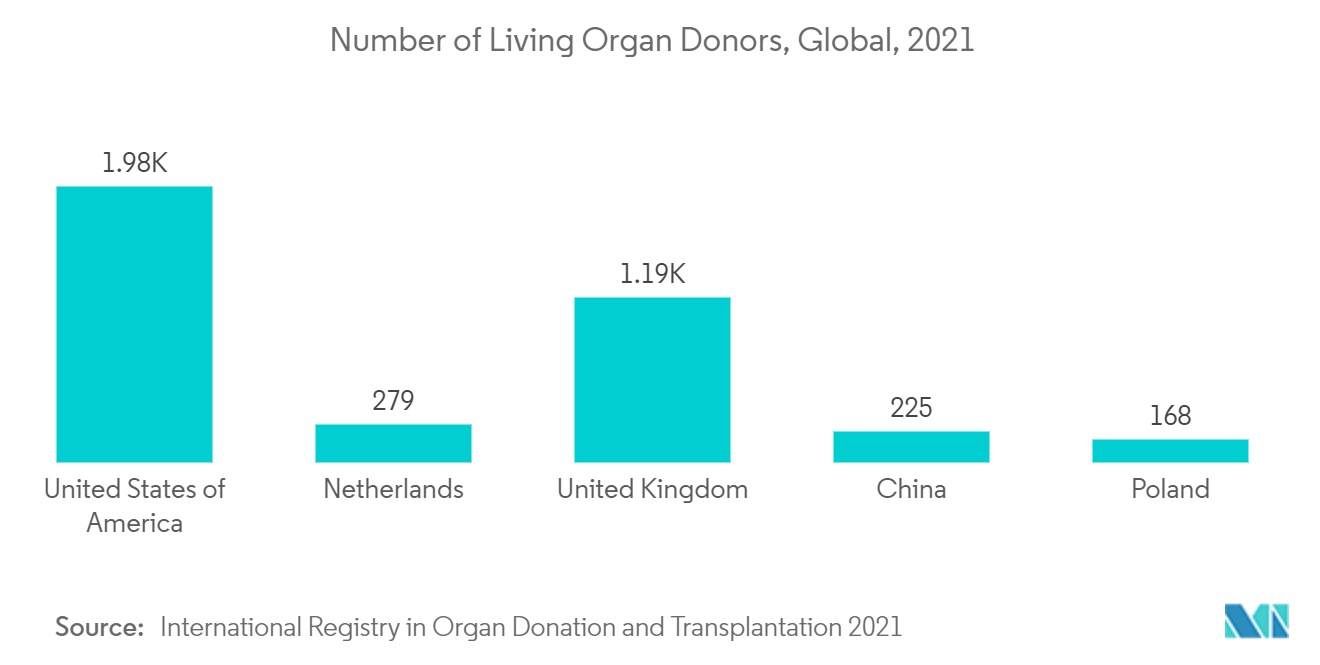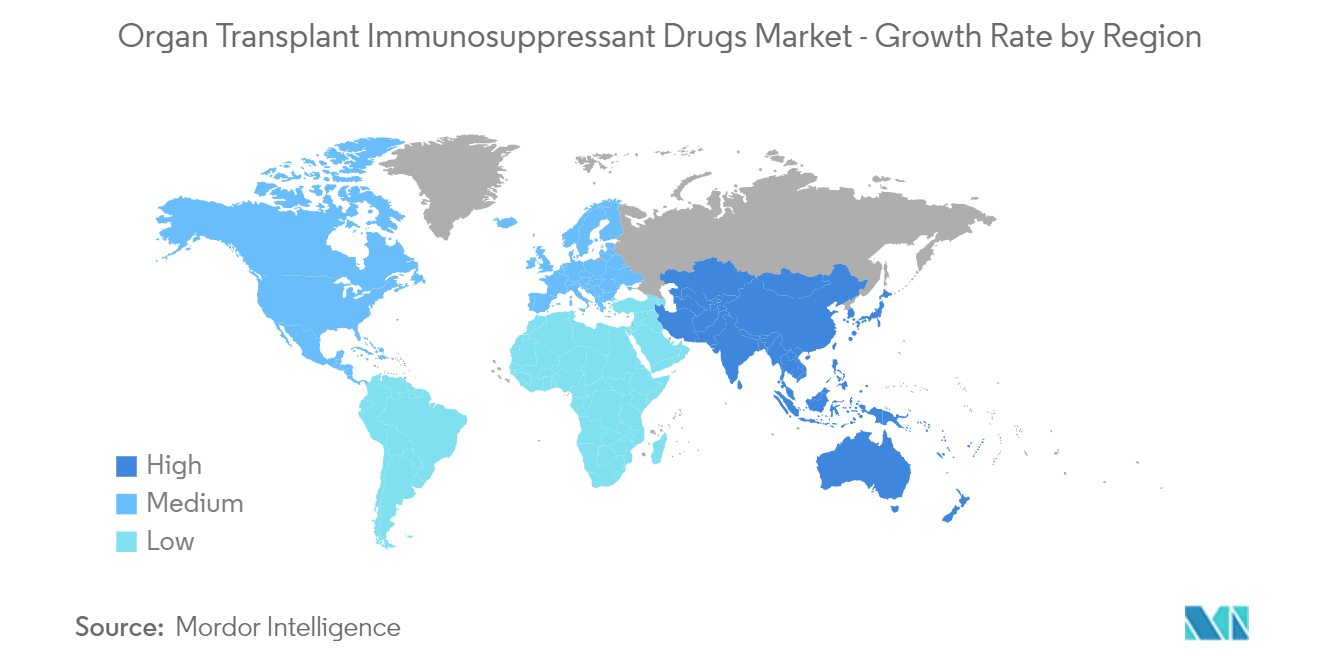Market Trends of Organ Transplant Immunosuppressant Drugs Industry
This section covers the major market trends shaping the Organ Transplant Immunosuppressant Drugs Market according to our research experts:
Calcineurin Inhibitors Segment is Expected to Hold a Major Market Share in the Market Over the Forecast Period
Calcineurin inhibitors are medicines that inhibit the action of calcineurin, an enzyme that activates T-cells of the immune system. These inhibitors exert their effects by reducing interleukin-2 production and receptor expression, reducing T-cell activation. Furthermore, they are essential for immunosuppression in solid organ transplantation. The calcineurin inhibitors segment is likely to witness growth over the forecast period since calcineurin inhibitors help improve the body's immune reactions after organ transplantation and are administered via oral, intravenous, topical, and ophthalmic routes.
The calcineurin Inhibitors segment holds a significant market share in the organ transplant immunosuppressant drugs market. It is anticipated to show a similar trend over the forecast period since it is effective and has been used in kidney transplant recipients for a long period. Calcineurin inhibitors (CNIs) represent the foundation of renal transplant immunosuppression. The two medicines comprising this therapeutic class, cyclosporine A (CSA) and tacrolimus (TAC), have been used in kidney transplant recipients for over 20 years. As per the article published in PubMed journal in April 2022, calcineurin inhibitors are safe to administer to patients and do not cause any fatal outcomes in kidney transplant recipients.
Moreover, the rising incidence of kidney failures and liver damage, which is expected to increase the demand for kidney and liver transplantation, and technological advancements in organ transplantations are the key driving factors in the calcineurin inhibitors segment. For instance, as per the IRODAT 2021 report, the number of kidney transplants from living donors was 1,803 in the United States, whereas, in Norway, the transplantation count was 1,237. As per the same source, the number of liver transplants from living donors was 1,632 in Turkey, whereas, in Saudi Arabia, the transplantation count was 1,013.
Hence, the chance of utilizing the immunosuppressant medication after the transplant is likely to increase. Therefore, the market is expected to grow in the calcineurin segment over the forecast period.

North America is Expected to Hold a Significant Share in the Market and Expected to do Same in the Forecast Period
North America is expected to hold a major market share in the global organ transplant immunosuppressant drugs market due to the high number of transplant procedures, the increasing prevalence of chronic ailments requiring organ transplants, and favorable reimbursement policies in this region. For instance, according to the CDC 2022 update, in the United States, the most transplanted organs are the kidney, liver, heart, lungs, pancreas, and intestines. On any given day, there are around 100,000 people on the active waiting list for organs, but only approximately 14,000 deceased organ donors in 2021, with each providing, on average, 3.5 organs. As per the same source in the United States, the most transplanted tissues are bones, tendons, ligaments, skin, heart valves, blood vessels, and corneas. Around 3.3 million tissue grafts were distributed each year. About 2.5 million grafts were transplanted.
Furthermore, as per the IRODAT 2021 report, in 2021, the number of organ transplants from living donors in Mexico was 1,158. Hence due to the increase in organ transplantation in Mexico, there is a high chance of taking immunosuppressant medication after the liver transplantation surgery. Therefore, the organ transplant immunosuppressant drugs market is likely to grow in the studied region. Additionally, as per the CIHI report, as of December 31, 2021, 4,043 Canadians were on wait lists to receive a transplant, 57% were active on the waiting list, and 43% were on hold due to a medical or other reason for a short period. According to the same source, for every transplant in Canada in 2021, approximately 1.5 patients were waiting to receive an organ. For each organ-specific transplant that occurred, 2.3 patients were waiting for a pancreas, 1.8 were waiting for a kidney, one was waiting for a heart, and less than one was waiting for a liver or a lung. Hence, the higher rates of organ transplantation in Canada are also driving the market growth in the North American region over the forecast period.
Furthermore, technological advancements in tissue engineering and organ transplantations, increasing healthcare spending, and the presence of well-established healthcare infrastructure are fueling the growth of the overall regional market to a large extent. Additionally, the data updated by the USFDA published in November 2021 showed that there were 4,944 FDA-registered facilities for biologics developments and 6,799 for human drugs. Such a high number of manufacturing facilities to produce drugs is expected to create opportunities for utilizing the organ transplant immunosuppressant drugs market and drive market growth in the studied region.
Hence considering the above-mentioned factors, North America is likely to witness growth over the forecast period.


